GM Investing $2 Billion Into EV Startup Nikola
General Motors announced it will be taking an 11-percent stake in Nikola on Tuesday. It even said it would be actively helping the startup produce the hydrogen/battery-powered Badger pickup, sending the firm’s already-insane share price through the roof. Nikola shares were up 30 percent before the trading day even began, with the General seeing some positive changes in its own stock. Things only improved from there for both companies as news of the partnership continued to spread.
The deal is costing GM $2 billion and allots it one board member of its choosing in exchange for its manufacturing expertise.
QOTD: Would You Ever Consider China's Best-Selling EV?
While Tesla’s Model 3 sedan is supposedly taking the world by storm, some hot competition has been reported in China. The Hongguang MINI EV has eclipsed the offspring of Elon Musk to become the country’s best-selling electric vehicle. Though at just 28,800 yuan ($4,200), it hardly seems a fair comparison. Tesla’s minimalist sedan is larger and costs roughly 10 times what SAIC Motor, General Motors, and Liuzhou Wuling Motors decided the MINI EV was worth.
That’s right, it took the combined strength of three automakers to birth this baby and we’re wondering what it would take to get you to drive one home if they were offered here.
Study: Global Recession Negatively Impacting EV Sales (Duh)
Today’s study comes straight from the memoirs of Captain Obvious. Apparently, an economic recession isn’t what you want when you’re vying to sell factory fresh automobiles beyond the confines of rock-bottom prices. There might even be a correlation between being broke and lacking the ability to purchase items in general. At least, that was the takeaway from a cutting-edge assessment recently conducted by Auto Trader in the United Kingdom.
In an attempt to keep tabs on the public’s level of interest in reference to electric vehicles, the outlet has been surveying people at semi-regular intervals. Back in January, it asked 2,300 consumers ‘waddya buying,’ only to learn that 17 percent had their hearts set on a battery electric vehicle. That’s impressive considering less than 10 percent of automobiles in the UK utilize electricity for propulsion and most of those happen to be hybrid models. But the trend toward BEVs has shifted rather dramatically since the COVID pandemic took hold.
A follow-up questionnaire from August (this time with 2,700 respondents) shows demand has waned immensely. Only 4 percent of respondents said they were planning on getting themselves a battery electric vehicle.
Rivian Snubs Michigan for California
Following reports that Rivian might decide to move a large portion of its operations out of Michigan, news has reached us that it’s all but abandoning the Mitten State for sunny California.
Starting its life as Avera Motors in Florida back in 2009, the EV startup moved to Plymouth, Michigan in 2015 to poach talent from the Big Three and lay down some roots. However, the company doesn’t appear to have wormed its way into the soil all that deeply. It now plans to move a sizable portion of its operations to Irvine, California, with some employees heading to its plant in Normal, Illinois, to prepare for production.
This has got to be a slap in the face for some Michigan residents, since many were instrumental in the development of Rivian’s first models. The business fired a gaggle of people at its engineering and design center near Detroit at the start of June, only to slot in a couple of high-paid executives. Now it’s starting to look like it may pull up stakes and skip town.
Lyft Promises to Swap Exclusively to EVs by Bullying Everyone
On Wednesday, ride-hailing company Lyft announced every vehicle using its platform will be electric by 2030. Since its fleet is comprised primarily of contractors using private vehicles, one might assume the company is planning to offer some financial assistance upon their next purchase. But being sensible rarely means being correct in the postmodern era.
Rather than encouraging its own drivers to make the switch, Lyft plans to work with NGOs, lawmakers, and pressure its industry rivals to make electrification mainstream. Obviously, this will include financial incentives for organizations willing to make the switch to EVs in exchange for a fat wad of cash. That’s what you’re now supposed to focus on. Ignore that Lyft’s announcement literally offers no personal commitment and passes every scrap of responsibility it pretends to be taking on to the government.
Lyft is trying to play the hero, and thinking about it too hard is going to muck everything up.
General Motors: Electrification Will Take 'Years and Decades'
Since the dawn of the new century, the automotive industry has been forced to revise electrification timelines for a cavalcade of reasons. Development programs have proven costly, the economy has taken a turn (or turns) for the worse, customers haven’t responded in great numbers, and the materials necessary for battery have been in short supply for many. Throw in the trouble some companies have had with programming such cars or ending up with electric vehicles that want for truly enviable range and you’re beginning to see the whole, problematic enchilada.
It wasn’t all that long ago that General Motors promised over 20 new all-electric models by 2023. Granted, this promise was made in 2017 — during a time when the industry couldn’t possibly have foreseen the global hardships that would befall us or known we’d have the ability to remember what was said just a few years prior. The messaging has changed, either because mainstream automakers cannot provide the kind of cars that will continue to spur EV adoption, or because they no longer hold much interest in trying.
Indianapolis Muses Solution to Failed EV Program, Asks for Help
Indianapolis’ electric car-sharing program, BlueIndy, died in May. Failed green initiatives are fairly common these days, but they remain an important exercise in finding out what works and what doesn’t in order for progress to be made. Unfortunately, that doesn’t preclude host cities from having to deal with the aftermath — and Indiana’s capitol now needs to decide what’s to be done with the EVs and their stations.
BlueIndy lasted four years, with the company announcing it was forced to cease operations because it “did not reach the level of activity required to be economically viable.” The plan was to provide an eco-friendly alternative to car ownership, though Indy citizens seemed less eager than their leadership. This has left the city with dozens of small, relatively new EVs waiting to be crushed and roughly 90 charging stations it has no idea what to do with.
Naturally, it’s asking for advice.
Bollinger Patents Passthrough Cargo Gate for Pickup/SUV
The automotive industry’s sudden interest in all-electric pickups may have been surprising initially, but they’ve since offered a few perks that have helped us understand why companies are suddenly so smitten with the concept. When Rivian first showed its pickup in 2018, it came with some interesting storage solutions that were only possible because it doesn’t need to worry about things like a driveshaft tunnel or a crowded engine bay. We wouldn’t call them game changers but they certainly opened the door (literally) for new storage options and we’re beginning to see this take ever-more impressive forms.
Bollinger Motors has recently patented a passthrough gate that allows one to slot exceptionally long cargo all the way through the vehicle. Officially, they’re two separate patents that work in tandem to allow pickup owners a spot to stash up to 16 feet of lumber — or more if one doesn’t mind it hanging out the front and/or back of the vehicle. Just be sure to tie things down so you don’t accidentally create a brake-launched tarmac torpedo.
EV Offensive Looking More and More Like a Decoy Attack
Mercedes-Benz is nixing its all-electric EQ hatchback, according to R&D boss Markus Schäfer. Instead, it’s going to play a GLA-sized EQA crossover as its next hand.
Speaking with Autocar, Schäfer basically said it was a question of market demand. The EQC has already been delayed until at least 2021 for U.S. customers, though we’ve heard talk that its suspension could prove indefinite as the brand reassesses what should — and shouldn’t — be included in its future lineup. “We have to watch customer demand and, at the moment, SUVs and crossovers are the absolute favorites. Those are our first priorities,” Mercedes’ R&D head explained.
It’s only the latest chapter in a complicated story about an industry that’s constantly having to rethink how it handles electric cars.
Volkswagen Explains Its Complicated Relationship With Electricity and Fuel
Like most legacy automakers, Volkswagen is casually walking back promises of electrification. As with self-driving cars, the technology behind new-energy vehicles is taking longer to mature than the industry would like. Meanwhile, the market — skewed as it is toward larger models — has been about as cooperative as a sugared-up child come bedtime.
Despite governments around the world incentivizing the sale of EVs, they’re still but a fraction of whole.
With the pandemic undoubtedly discouraging consumers from purchasing big-ticket items, electric vehicle sales aren’t presumed to make a lot of headway in 2020, either. We recently learned that some of the promises made by Ford and General Motors in regard to electrification were overblown by corporate messaging. In truth, they both plan on remaining heavily dependent upon truck and crossover sales for several more years.
However, Volkswagen seemed to be betting everything it had on battery technology. In the wake of its 2015 diesel emission scandal, VW was one of the first companies to promise widespread electrification by suggesting it would build one million EVs by 2023 — with 70 new green models introduced by 2029. The past year has seen the automaker issue qualifying remarks that leave us feeling dubious about its end goal.
Why Is Everyone So Surprised Detroit Isn't Prioritizing EVs?
News arose yesterday that General Motors’ and Ford Motor Company’s battle plans rely heavily on SUV and pickup sales, rather than electric vehicles. Details of the corporate strategies, first shared by Reuters, soon circulated through the media, with many outlets upset that the pair seem to have oversold the role electrification will play in their respective lineups through 2026. One wonders how they could possibly be this surprised.
Using data issued to parts suppliers from the two automakers, AutoForecast Solutions predicted North American production of SUV models from GM and Ford will outpace the assembly of traditional cars by more than eight to one in 2026. Roughly 93 percent of those models are expected to be dependent upon gasoline. Meanwhile, Reuters compared the manufacturers’ strategy against Tesla — a company that only exists for the explicit purpose of selling EVs and has never assembled a gas-powered automobile — as if all manufacturers are equal in scope and cater to the same type of customers.
Daimler CEO: 'Streamlining the Portfolio' Necessary for Mercedes-Benz
Still in the midst of a $1.4-billion restructuring plan that aims to cut 10 percent of its workforce, Mercedes-Benz is reconsidering what its product lineup should look like moving ahead. While most of the doomed models will be chosen due to lackluster demand (e.g. X-Class pickup) plenty will be nixed as a result of tightening emission laws. Mercedes parent Daimler issued two profit warnings in 2019 after the luxury brand was fined $960 million in an emissions-cheating settlement. Like many automakers, it was also hemorrhaging cash through its investments in electrification.
An apt analogy for the automotive industry’s stampede toward EVs would be lemmings hurling themselves off a seaside cliff — but not because of the popular misconception that the critters are intentionally committing mass suicide. When lemmings collectively off themselves, it’s the result of migratory behavior gone awry. They simply bunch up and move in a singular direction, largely unaware of the consequences.
Can EVs Go the Distance? EU Approves 3 Billion Battery Development Fund
The European Union has approved a 3.2 billion-euro fund to promote the research and development of battery technology, with cash pouring in from Belgium, Finland, France, Germany, Italy, Poland and Sweden. While Brussels has been on an electrification push ever since Europe fell out of love with diesel, now may not be the best time to double down on EVs.
We recently covered China’s ailing automotive market, noting the poor performance of new energy vehicles (which fell by at least 40 percent vs the previous November). We’ve also covered a survey showing how eager the nation’s consumer base appeared to be to purchase them, with both writer and readership wondering how reliable those figures actually were. Our collective dubiousness appears to have been valid. Despite being the top region for EV sales, new data from Bernstein Research claims about 70 percent of the 1.2 million electric or gasoline-electric hybrid models sold in China over the past year went directly to government or corporate fleets. When the government started removing subsidies, sales plummeted with little private interest to soften the impact.
Europe may be on a vaguely similar path. While worldwide EV sales are up about 13 percent through October, sales in North America are down 2 percent (at 301,000 deliveries), with Europe rising 37 percent (to 395,000). That’s partially due to European cities being closer together (with more charging points between them), though most EU member states also offer various electric vehicle purchasing incentives and tax exemptions. They’ve likewise adopted stricter environmental rules that make EVs more appetizing to own in the future.
We'll Have to Build a Ton of EV Charging Points If Electrification Is Going to Work
If you hop around this country on a semi-regular basis, you’ve likely noticed that California seems better equipped to endure the onslaught of electric vehicles poised to reshape our society. For all the complaints about the state’s managerial issues and a homelessness situation that’s spinning wildly out of control, it’s one of the few places you can regularly encounter EV charging stations without actively looking.
It’s also an area you see them frequently in use. Many states still harbor large distances between charge points that don’t see a lot of use in the first place. But things are different in California. There are dedicated EV stations along most major highways, increasing in frequency the closer to you get to metropolitan hubs. Once inside the city limits, there are are countless office parks, service stations, and parking structures offering ground-floor charging — many of which will actually have cars plugged into them.
You’ll also notice many are broken and some don’t let you pay via a single swipe of your credit card. Instead, the machine will ask you to make an account with whatever company is offering the service, often trying to push you into using a proprietary app. It’s unfortunate and probably the last thing you want to do after scouting out a particularly well-hidden station because the first three you came across were occupied or out of order.
Ford Mustang Lithium: 900 Horsepower, Entirely Electric, Six-Speed Manual
Ford’s whetting electric appetites at SEMA this week with its new Mustang Lithium prototype. Officially a one-off model for the show, the automaker said it was present to prove how utterly dope future electric performance vehicles will be. Good timing, too, as the debut of Ford’s all-electric, Mustang-inspired crossover is almost upon us.
Ignoring the timing in relation to the Mach E, it’s mildly curious that the brand would first preview the prototype at an aftermarket trade show. But it’s worth noting that the electric Mustang actually cobbles together quite a few parts from various catalogs. The manufacturer informs us that Lithium is equipped with Ford Performance’s Track Handling Pack and Brembo brakes sourced from the Shelby GT350R — though they’re the tamest inclusions by far.
Cheap Electronics: 2020 Mini Cooper SE Pricing Announced
Our big concern for Mini’s upcoming electric hatchback was that it wouldn’t have sufficient range to make sense in the United States. The company seemed to be more interested in producing a rambunctious urban runabout, rather than something that could serve as a do-anything, go-anywhere EV. But we figured we’d wait to see where BMW Group planned on pricing the thing before folding arms and furrowing brows.
As it turns out, the Mini Cooper SE’s starting MSRP will be $30,750 (including destination). While that undercuts the cost of some “rival” models by several grand, the Mini EV brings less to the party.
'Free' EV Charging Still Costs Something
There are plenty of ways to get free gasoline. Unfortunately, most require you to become uncomfortably intimate with advertising to reap any rewards. Converting your vehicle into a mobile billboard for a brand is a good way to convince said brand to foot your monthly gas bill. But you can also sit through hours of digital surveys or ads to encourage companies to part with fuel cards. Either way, it’s free go juice — with a catch.
Volta Industries is attempting to duplicate this model for EV charging, without the need for middle men. The company will allot a certain amount of electric charge time to customers willing to interact with “embedded advertisements” occupying high-end retail zones. While the company has promoted this business model for several years, it only entered our peripheral vision in recent months after securing investments and solidifying its plans.
Despite the phrase “if you’re getting something for free, you are the product” being around since at least the 1970s, it’s infinitely applicable here.
Volkswagen Crozz Crossover Now Named ID.4, Prototype Teased in Frankfurt
Naming a car is difficult. All the best predatory animals have been taken and getting creative often results in the certain parts of the world thinking you’ve intentionally named your car something hilarious. Chevrolet’s Nova is the classic example, but modern automobiles still run into trouble. Hyundai’s Kona falls on Portuguese ears as the most vulgar synonym for vagina (an oddly common theme among car monikers) and Audi’s e-Tron translates roughly into French as “turd.” It’s no wonder so many automakers simply forgo issuing real names, opting instead for an alphanumeric jumble.
When Volkswagen began previewing concept versions of its electrified ID lineup, models used a bizarre naming strategy. Maybe titles like Roomzz, Buzz, Crozz, and Vizzion sound better in German, but they didn’t play well here. VW’s solution to the problem has been to simply assign their production counterparts with a number — and it’s looking like that will be continue to be the case.
While the brand was showcasing the new ID.3 hatchback at the Frankfurt Motor Show this week, it also teased a follow-up model that will actually make its way stateside. Originally dubbed the Crozz, the car is now named simply “ID.4.”
Nissan Previews New Compact Crossover for Dealers
Despite bringing the electric Leaf to market while the rest of the industry was still scratching its head over how to handle EVs, Nissan has since lost its lead. Eager to get back into the race, the automaker is putting together what it hopes will be a market-friendly model utilizing battery power. It previewed a pre-production concept to U.S. dealers last month.
While the clandestine nature of its debut leaves a lot up in the air, it’s clearly aimed at besting the latest and greatest coming from rival manufacturers. Range will be in the neighborhood of 300 miles, with room for five and sprightly acceleration. The shape? Crossover, obviously.
Automakers Need to Start Worrying About the Batteries Lurking in Older EVs
After a few years, most of us begin to notice our smartphones have developed an inability to hold a charge like they used to. The fix used to be pretty simple, no worse than swapping a couple of AAs into the remote. Order a new battery online, pop off the back of the device, and replace the run-down cell with a fresh one. Unfortunately, this simple act grew more difficult as manufacturers gradually decided to seal off access to your phone’s internals — mimicking the plight facing EV owners whose energy source is losing capacity.
A number of electric vehicles in the United States are about to celebrate their 10th birthday. A bunch of them are Nissan Leafs, the first mainstream BEV made widely available in the U.S. market. At the same time, customers have begun complaining about diminished range, with some asking for a battery refurbishment program like the one enjoyed by customers living in Japan.
So far, the best they’ve received is a confident “maybe” from the manufacturer. It might behoove them to expedite things and pull the trigger. Automakers are running behind in terms of establishing a global solution to aging EV batteries, and they’re risking a lot by not already having one in place.
Another Study Shows Consumers Hesitant to Embrace Mobility
With automakers investing heavily into the development of electrified and autonomous vehicles, it might seem there is a gigantic consumer base ready and raring to go out and buy them. But every study we’ve encountered suggests the exact opposite. Electric cars are still limited to tech fetishists with regular folks occasionally deciding to become early adopters. Meanwhile, AVs are still in their infancy with engineers keen to document every baby step they take as the public remains ill-informed on their overall status.
It was presumed, however, that this would change as development progressed and “mobility” became more mainstream. But a new study from J.D. Power, backed by Survey Monkey, has showed — once again — this is not yet the case. Based on a 100-point scale, the duo’s 2019 Mobility Confidence Index yielded a score of 36 for self-driving vehicles and 55 for battery-electric vehicles.
FCA Putting $788 Million Behind New 500 EV, Small Battery Platform
Fiat Chrysler will invest $788 million to build a production line for the new 500 electric, according to the company’s European CFO Pietro Gorlier. An extension of automaker’s plan to to dump 5 billion euros ($5.6 billion) into Italy, the deal makes good on earlier promises that the automaker would establish a dedicated small battery-electric vehicle platform.
No "Refreshed" Model X or Model S Coming, Says Musk
Are you sitting around waiting for a Tesla Model S or Model X update before spending your hard-earned money on the high-end electric vehicle of your dreams? You might as well just buy now because, according to Elon Musk himself, there is no major refresh or updates coming to either of Tesla’s top-end models. Cue the sad trombone.
In response to a tweet from last night, Musk answered the question as to whether there would be an update on the horizon. “There is no ‘refreshed’ Model X or Model S coming” said the CEO, “only a series of minor ongoing changes.” Musk went on to then say there there might be small updates over time, like integrating the motor from the Model 3 into the S and X, but that just happened recently so there’s nothing in the pipeline.
Mini Introduces New Cooper SE Electric With Lackluster Range
A few short years ago, there were very few players in the electric vehicle marketplace, with cars like the first-generation Leaf topping out with 73 miles of range. Since then, we’ve seen EVs like the Tesla Model 3 that are rated with 310 miles of range and some models can go even farther between finding a charge point. In this growing and competitive market, Mini introduced an all-new electric Mini, called the Cooper SE.
The Cooper SE is an all electric car with a 135 kW electric motor good for 181 horsepower and 199 lb-ft of torque. Mini doesn’t cite U.S. EPA estimated range numbers, but they are claiming a range of 235 to 270 kilometers. A direct conversion to miles would be — checks notes — 146 miles. Since the European testing cycle is optimistic, the EPA range is likely to sit around 114 miles according to Automotive News.
That’s missing the mark. By a lot.
Europe Wants to Compete With China's Battery Production, Eventually
Wary that China might have the battery market totally cornered by the time electric vehicles become mainstream, the European Union is trying to jumpstart the industry at home. This year, the EU has started working with manufacturers and financial institutions to develop a reliable supply chain of the lithium-ion packs that have been difficult to come by.
European Commission Vice President Maros Sefcovic is targeting 100 billion euros ($113 billion) for the program, which Bloomberg said would help the EU “act like China.”
VW Says Battery Supply Problems Have Been Solved… for a While
Following rumors that Audi’s E-Tron would have to be delayed due to issues with battery supplier LG Chem and some unforeseen “software development” problems, Volkswagen Group’s plan to build 330,000 electric vehicles per year in Zwickau, Germany, by 2021 appeared to possess a plot hole the size of the Grand Canyon.
The EV problem is not unique to Volkswagen. Other manufacturers hoping to build electric cars have also been struggling with factory retooling, high development costs, and in-demand battery suppliers that are more than willing to change their prices. However VW claims to have solved some of these issues, at least for a while, citing new investments in China and multiple partnerships with battery concerns.
BEV Fires Encourage China to Get Serious About Battery Safety, Vehicle Monitoring
China is currently the largest proponent of electric vehicles on the entire planet. The nation has even incorporated BEVs as a significant part of its complex strategy to overtake the United States the dominant global superpower. However a sudden influx of battery related fires has caused it some trepidation, even though there hasn’t been much evidence to suggest they are actually more prone to catching fire than gas-powered vehicles.
Regardless, the People’s Republic is now demanding that manufacturers conduct routine inspections on electric cars. China’s Ministry of Industry and Information Technology says all companies must conduct checks on BEVs, focusing on battery waterproofing, battery boxes, charging points, high-voltage wiring harnesses, and even the wear of mechanical components. They will also be required to report on repairs and any incidents that might indicate a problem. According to the ministry’s press release, they have until October to submit their findings.
Captain Obvious Arrives: UK Researchers Claim EV Charging Still Not Ideal
With Europe and China promoting aggressive emission mandates, including proposals to eventually prohibit the sale of internal combustion vehicles, electric cars look to be a shoe-in. The UK’s Committee on Climate Change recently recommended moving up the country’s 2040 deadline to end the sale of gasoline or diesel cars to 2035 as part of a wider target to cut the country’s net greenhouse gas emissions to zero by 2050.
Unfortunately, battery electric vehicles still represent less than 1 percent of the region’s new car sales. While EV sales rose 63 percent in April vs the previous year, the adoption rate doesn’t appear to be on the same track as regulatory measures pushed by various authorities.
According to government-commissioned poll from 2016, range anxiety appears to be the primary culprit in the United Kingdom. Most respondents cited recharging their battery as their biggest hangup, with elevated EV costs playing second fiddle.
Toyota Ramps Up Electrification Timeline, Outlines Nuanced Strategy
Following announcements that Toyota would be working on a shared electric vehicle platform with Subaru, as well as a jointly developed crossover, the brand conducted a press conference on Friday regarding its decision to “popularize BEVs.” While the announcement didn’t deal with the specifics of cutting-edge tech, auxiliary business opportunities, or even a total shift toward battery electric vehicles, it did represent a major commitment from a manufacturer that’s notoriously cautious in its decision making.
Opening the conference, Executive Vice President Shigeki Terashi focused largely on the challenges of electrification. Terashi said Toyota’s intent has always been to support “social progress” and curb CO2 emissions while acknowledging that it had only made formal commitments to electrification within the last couple of years. However, he showed that the automaker has been busy within that time, and had several initiatives in the works aimed at repositioning Toyota as a mobility brand, by outlining the company’s extremely complex EV strategy.
Buckle up, because there is a lot to this — including some new cars.
New Tesla Fire Manifests in Belgium
A Tesla Model S suffered a total meltdown after being connected to one of the company’s proprietary Supercharger stations in Antwerp, Belgium. While details are scant, local reports state the driver simply went to charge his automobile and returned to a burning wreck a short time later.
Considering the fire department had to totally submerge the ruined vehicle in a pool of water to ensure the car didn’t reignite, the odds of uncovering exactly what went wrong appear slim. But it wasn’t all that long ago that Tesla was pushing over-the-air updates to mitigate a rash of fires that cropped up in the United States and Asia over the past few months. Surely, the manufacturer has some idea of what might have gone wrong.
Los Angeles Has a Green New Deal of Its Own - No ICE Vehicles by 2050
The last decade is littered with announcements from cities, provinces, and states from across the globe, promising to ban internal combustion vehicles by a predetermined date. While the rules and timelines vary quite a bit, the locations are relatively consistent. China and Europe are the most eager to adopt a zero-emission strategy, with California doing most of the promising in North America.
This week, Los Angeles Mayor Eric Garcetti announced the city’s “ Green New Deal.” Styled to resemble the contentious stimulus program sponsored by Rep. Alexandria Ocasio-Cortez (D-NY) and Sen. Ed Markey (D-MA) that shares its name, LA’s plan is similarly concerned with promoting “environmental justice,” equity, green jobs, renewable energy, improved air quality, and sourcing clean water.
Transportation is also a major component of the deal, with the city suggesting that 100 percent of car sales will be zero-emission by 2050 and 50 percent of all trips could be completed by walking, biking, “micro-mobility” (scooters, etc), or public transit — reducing vehicle miles per capita by 45 percent in the same timeframe.
Germany's Transition to EV-Land Sounds Slightly Unpleasant
Yesterday, we discussed Volkswagen trouble in finding the perfect recipe for affordable electric cars. Today, its BMW’s turn, and a broader look at how electrification is affecting Germany on the whole.
Reducing auto emissions has become immeasurably stylish in countries across the globe, with Europe doing some of the heaviest lifting via stringent regulatory measures. As a result, Germany’s automotive sector intends to go green and push EVs to the forefront. While BMW may not have committed itself to electrification quite so thoroughly as Volkswagen, the company isn’t sitting around while the competition does everything. The company is making concerted efforts of its own. Still, there are drawbacks to upending established supply chains and dumping a fortune into developing an entirely different type of car.
VW Group Admits Developing Affordable EVs Will Be Difficult
Even with affordable electric vehicles cropping up on the global market, their budgetary nature is relative. While the industry promises that EVs will offer the world an affordable, mechanically simple and green alternative to traditional internal combustion models, they’ve yet to deliver. That’s not to suggest e-cars are failures, just that the technologies involved are still maturing.
Battery prices will continue to decline and eventually governments won’t always need to incentivize EV purchases through tax credits. But we’ve yet to reach the point where it makes just as much financial sense to buy a small EV as it would a gasoline-powered econobox. That could soon change.
BMW I2 to Become Company's First Jointly-developed EV With Daimler
The unlikely alliance between BMW and Daimler, solidified earlier this year, is in the opening stages of producing something tangible. The duo are already said to be working on a joint platform for electric vehicles, which the German business publication Manager Magazin claims will underpin a new EV from BMW.
Called the i2, the battery-powered subcompact is to be slotted beneath BMW’s existing i3. While rumored to be similar in size, the i2 will abandon the i3’s carbon fiber body in an attempt to minimize costs and broaden appeal. Daimler would follow by producing its own version, likely using Mercedes-Benz’s EQ sub-brand.
Next-generation Fiat 500 Confirmed As Electric Only, Old Model Will Stick Around
Following reports that the Fiat 500 would see the inclusion of a new all-electric powertrain in 2020, Fiat Chrysler has confirmed the model will actually become a dedicated EV — foregoing internal combustion entirely.
While the vehicle’s overall dimensions are to be retained, FCA chief marketing officer Olivier François said the small car would place additional emphasis on attainable urban luxury and electrification.
“Premium is the way we will go with the EV 500,” he told AutoExpress in a recent interview. “A new 500, totally renewed. A new object. Totally electric. It’s kind of an urban Tesla, with beautiful style. Italianess, dolce vita in an electric car. It’s the polar opposite of Centoventi.”
The Future, by Kia: 'Imagine by Kia' EV Concept Bows in Geneva, Carries Familiar Baggage
Kia’s much-teased EV concept turned out to be less attractive and more serious than we initially assumed. Following an announcement suggesting the vehicle’s wild arrangement of 21 interior screens was a humorous jab at industry trends, the automaker officially debuted the car at the Geneva Motor Show. Styled at the company’s European design centre in Frankfurt, the “Imagine by Kia” concept manifested into a slightly puffy crossover serving as an exercise in design.
In the end, Imagine is guilty of some of the show car sins Kia seemed to be railing against. For starters, it uses a single sheet of glass for the windscreen and roof, features rear-hinged doors at the back, rides on bespoke Goodyear tires, and hosts the ever-popular menagerie of interior displays.
Polestar 2 Debut: China's Response to the Tesla Model 3
Polestar, Volvo’s former performance division (which parent company Geely insisted be spun off as its own electric car brand), announced its second automobile on Wednesday. Whereas the Polestar 1 was a 600-horsepower hybrid coupe, Polestar 2 adds a set of rear doors and does away with internal combustion altogether.
For all the “Tesla fighters” out there, this one comes the closest to giving the Model 3 a run for its money. With a targeted range of 275 miles, accomplished via a 78-kilowatt-hour battery pack structurally integrated into the vehicle’s floor, Polestar 2’s in the sweet spot for range. But it also happens to be the correct shape (five-door fastback) and price to ensure its gets stuck in Elon Musk’s tastefully shorn hair.
Honda Urban EV Prototype to Debut in Geneva
Back in 2017, Honda debuted its adorable Urban EV Concept, a vehicle that ended up becoming the belle of the Frankfurt Auto Show. Its cheeky design was suitably modern while still adhering to traditional automotive models. In fact, the car seems styled in a manner that’s intentionally reminiscent of the first-generation Civic.
Having already promised a production version for the European market, Honda has issued an update on the vehicle’s progress. The automaker recently confirmed it will show a new prototype of the Urban EV at the 2019 Geneva Motor Show in March, ahead of a production model slated to debut later this year. It also provided a teaser sketch of the model (above), proving that Honda doesn’t want to alter the cute little car more than it needs to.
Colorado Mandates Electric Vehicle Sales, State Dealers Association Angry
The State of Colorado will be the next territory in the United States to join California in embracing electric vehicles. Democratic Governor Jared Polis has signed an executive order (his very first) proposing that the zero-emission vehicle rule be enacted no later than May of 2019. The rule would require automakers to sell more electric cars within the state each year until it reaches utopian status.
However, that could still be decades away. Thus far, Polis has only asked the state’s Department of Public Health and Environment to propose new rules to the Air Quality Control Commission over the coming months. As of now, there are no official rules stipulating how many EVs need to be sold every year. And California, which started is ZEV program years ago, estimates electric vehicles will account for between 8 and 9 percent of all new car sales within the state by 2025.
The Country's Cheapest Normal* Electric Breaks Out of California
That asterisk exists in the headline because the Smart EQ Fortwo is not a vehicle many families would consider useful as a lone driveway denizen. With two seats and a range of — wait for it — 58 miles, the Smart brand’s city runabout manages to be more impractical that the late, unloved Mitsubishi i-MiEV. A difficult feat!
Moving up the practicality ladder, EV buyers looking for better range and a backseat now have a new option for low-priced motoring. Assuming, that is, that they live in one of the 13 states that signed on to California’s emissions laws.
Toyota's North American CEO Isn't Exactly Brimming With Enthusiasm for EVs
When it comes to electric vehicles, Toyota’s North American CEO seems to be on a different page than the company’s big boss, Akio Toyoda. A different page than Ford and General Motors, too. Maybe it’s because Toyoda has the entire globe in his sights, including many EV-hungry markets, while Jim Lentz can only look around, see low, low gas prices and a niche market dominated by a single player, and feel a rush of meh.
Lentz aired his views on our would-be electric future Wednesday, suggesting it would take draconian measures by the government to pry a healthy slice of Americans away from the gas pump. He’s not too enthused with Tesla, either.
Lincoln Promises 'Elegant' EVs, but Will They Be Visible?
Numerous observers walked away from the North American Auto Show, and more specifically Cadillac’s NAIAS Eve unveiling event, wondering whether electric crossovers are even more homogenous looking than their internal combustion brethren.
So, when Ford’s North American president, Kumar Galhotra, claims a Lincoln vehicle born of the Ford Mach E (or some similar name) will carry on the brand’s tradition of “quiet luxury,” one wonders how a vehicle without the need for a traditional grille will avoid getting lost in a sea of anonymity.
Our EVs Will Turn a Profit, Ford Says
As it prepares to launch a battery electric crossover, likely named Mach E, in 2020, Ford’s product boss told Blue Oval fans — and nervous investors — that the company isn’t in the habit of losing money with its products. As such, the upcoming Mustang-inspired crossover, like Ford’s other planned EVs, won’t be Fiat 500e-like money drain.
That’s one of the company’s promises, and here’s another: an electric F-150 and Transit.
Volkswagen Flings Cash, Jobs, and EVs at Chattanooga
Volkswagen spent the past year and change hinting that its Chattanooga, Tennessee assembly plant could become ground zero for an electric American product offensive, and guess what? That’s exactly what VW plans to do.
In a not-at-all surprising announcement, the German automaker said it plans to build electric vehicles at its only American plant, which just happens to have plenty of excess capacity. Backing up this promise is $800 million, which, in addition to funding the necessary tooling, should lead to the creation of 1,000 new jobs.
A Crossover With No Name Is Cadillac's Hedge Against an Oilless Future
Everyone else is doing it. And, if lawmakers on this side of the Atlantic start going the way of their European counterparts, traditional American luxury will need a shot of cleanliness. Even if they don’t, a fickle U.S. public might suddenly fall in love with the green lifestyle and give a big middle finger to internal combustion road cruisers.
Not wanting to be left without a savior in this future scenario, and needing some electric American prestige to sell to discerning Chinese buyers, Cadillac unveiled this piece of emissions-free hardware on the eve of the North American International Auto Show. It’s not vaporware, General Motors insists.
Forget About the Flops: Cadillac's Job Is to Make GM Greener
Remember the Cadillac ELR? Your author saw a single, solitary unit in the wild once, and there’s a good chance a journalist was behind the wheel. Not long for this world, the plug-in hybrid Caddy coupe gave way to the stately (but equally low-volume) CT6 Plug-in, whose death was revealed shortly before that of the sedan itself.
Not to be deterred from its goal of advancing electrification, or at least competing against glitzy foreign rivals, General Motors has announced the brand will once again pick up the green torch.
Volkswagen Considering a Rough-and-tumble Electric
The sky’s apparently the limit when it comes to the variety of vehicles that might emerge from Volkswagen’s dedicated MEB electric architecture. While the automaker’s looming EV onslaught already contains a hatchback, crossover, microbus, panel van, and possible luxury sedan, VW feels something’s missing: a tough, off-road ute.
One VW exec is pushing hard to give electric vehicles a brawnier image.
Nissan Unveils a Leaf That Goes the Distance
Ignoring next week’s North American International Auto Show, Nissan instead chose the high-tech confines of Las Vegas’ Consumer Electronics Show to reveal its latest Leaf. And it’s a Leaf that’s finally able to play with the big boys.
Called the Leaf e+, but carrying the Leaf Plus name when it goes on sale in the U.S. and Canada, this Leaf variant boasts more battery — 62 kWh of it. With all of that additional stored energy comes the ability to expand your horizons.
Infiniti QX Inspiration: The First Time Ever I Saw Your Face
“I thought the sun rose in your eyes, and the moon and the stars were the gifts you gave … to the dark … and the endless skies, my love,” sang Roberta Flack in the heady and decadent early ’70s. Suffice it to say this writer didn’t feel the earth move in his hand upon gazing at the Infiniti QX Inspiration, not did his heart tremble like a captive bird.
The QX Inspiration, like the Q Inspiration concept of 2018, heralds Infiniti’s electric — or at least electrified — future, and it’s a future without a face.
Could Norway's EV Adoption Signal Our Own Electric Future?
Perhaps — but Norway treats EV owners like royalty.
Battery electric vehicles are not subject to most of that country’s automotive taxes, are subsidized via credits, and are frequently offered free parking and charging points as a way to further encourage drivers to get away from gasoline and diesel. Norway is also working aggressively toward banning all gas-powered vehicles by 2025.
According to Reuters, the strategy is working. The independent Norwegian Road Federation (NRF) said Wednesday that electric cars rose to 31.2 percent of all sales last year. EVs represented 20.8 percent of the country’s overall sales in 2017 and just 5.5 percent in 2013.
Confirmed: Chevrolet's Bolt Loses Its Full Tax Credit In April, but Not the Doomed Volt
Good news for would-be Volt owners? Not really. Chevrolet’s soon-to-be-discontinued plug-in hybrid won’t live long enough to suffer the indignity of a halved federal EV tax credit. It’s dead in March, though remaining examples of the car everyone should want will no doubt linger on lots through the spring.
On Wednesday, General Motors announced, as expected, that it became the second automaker to pass the federal government’s 200,000-vehicle threshold, kicking off a three-month countdown to a chopped incentive.
Faraday Future Wraps Up Dispute With Main Investor Without Incident - What Now?
Faraday Future, the Chino-American EV developer that’s always in dutch, said Monday it has established and signed a new restructuring agreement with its main investor, Evergrande Health Industry Group Ltd. The deal concludes a rather ugly legal dispute between the two — one which placed Faraday’s intellectual property and finances in serious jeopardy.
Following the departure of co-founder Nick Sampson in November, the automaker found itself seeking new financing opportunities. Evergrande, which purchased a majority take in the EV firm via its summer acquisition of Season Smart, attempted to block new investments while Faraday accused the company of attempting a forcible takeover of the automaker by withholding funds earmarked for outstanding debts. Those funds were essential in helping it reach agreed-upon production targets.
Volkswagen's Solution to EV Charging Woes: A Charging Station That Requires Recharging
Concerned that customers won’t buy vehicles from its upcoming electric product tsunami for fear of missing their turn at the plug, Volkswagen is offering a fairly novel solution: mobile charging stations that also require recharging, presumably from a much larger charging station. A power station, for example.
The takeaway from Volkswagen’s lesson in energy packaging is “Buy an electric Volkswagen. You’ll be fine.”
Late Delivery? Tesla Says It'll Cover Your Tax Credit Shortfall
Having rung the bell on 200,000 electric vehicle deliveries in the U.S., Tesla will enter 2019 without the ability to offer a full $7,500 federal tax credit to would-be buyers. While not nearly as attractive an incentive as the same amount applied to a lower-priced EV, it’s still free public dollars. And it’s better than $3,750.
Twice this past fall, Tesla CEO Elon Musk warned customers they’d need to order by a certain date in order to ensure a delivery date prior to January 1st. After receiving a holiday earful from dutiful customers now facing late deliveries, Musk put on the Santa suit.
Nissan Seeks Trademark for Confusing Model Names, Hints At Future EV Lineup
Luckily for no one, the addition of electric model ranges to various OEM portfolios will only make today’s alphanumeric naming situation worse, including at Nissan. Mercedes-Benz and BMW deserve honorable mentions in this naming crime, but it’s really an industry-wide problem.
That brings us to this tidbit: the names IMQ and IMS, which just appeared in a trademark application. Until now, we’ve only heard about the Nissan IMX, which fails the name-recognition test compared to more more well-known monikers like CRX, MDX, and, um, DMX. The sought-after names point to two future vehicles, both of which might accompany the IMX electric crossover into production.
Daimler and BMW Looking to Take the Relationship Further: Report
Despite representing one of the great automotive rivalries, Daimler and BMW aren’t immune from the need to seek out cost savings in a rapidly evolving landscape. The two automakers have already teamed up on matters like components purchasing, and last year combined their respective car-sharing ventures.
However, sources close to the companies claim Daimler and Bimmer want to take it further, potentially sharing vehicle platforms and electric vehicle batteries.
A Cheaper Audi EV's on the Way: Report
Customers won’t get a chance to buy an Audi E-tron SUV until next year, but, if money’s tight, they might want to hold off for a while. The German brand’s first electric utility vehicle (seen above) arrives in the second quarter of 2019, carrying a base price of $74,800 — at least once the launch editions clear out. More E-trons will follow, including a Sportback version of the SUV and a top-flight GT sports sedan.
Green, but still requiring plenty of green to plunk one in your driveway. Audi apparently has a solution for budget-minded premium EV shoppers, and it plans to make it happen with help from Volkswagen.
Ohio Senators Want to Know GM's EV Plans, Demand American Production
Two senators in Ohio, home to the unfortunate Lordstown Assembly plant, want answers from General Motors. Following the automaker’s announcement that it will withdraw the plant’s sole product — the Chevrolet Cruze — in March of 2019, leaving the factory’s remaining 1,500 workers out of a job, politicians on both sides of the border want to know what GM’s plans for electric and autonomous mobility mean for their constituents.
If GM’s truly planning on springing a wave of electric vehicles on American buyers, Congress wants assurances that American workers will build them.
2019 Hyundai Nexo First Drive - The Future Is Beige
Hyundai’s hydrogen-powered Nexo is so ludicrously specialized that it’s utterly impossible to make a case for it outside of California. In fact, even that might be overstating its usefulness — allow me to try again. The Nexo Fuel Cell works near Los Angeles or San Francisco and absolutely nowhere else in North America. And, while that’s primarily due to its dependency on hydrogen fueling stations, which exist almost exclusively in two relatively small corners of the Golden State, it’s not the only reason.
You need to be a certain type of person to want to drive the Nexo. Someone who likes making a statement, is interested in green tech, and possesses absolutely zero interest in spirited bouts of driving. It’s slow, appliance-like, and offers nothing to the typical enthusiast crowd, save for some interesting styling. However, if you want something eye-catching that runs on alternative energy and routinely spend a large portion of your day in horrible LA traffic, it could be the right tool for the job.
As Expected, Volkswagen's EV Platform to Breed a Big 'un
As we’ve seen with nearly all mainstream automakers, going without a three-row crossover is akin to cutting one’s throat. Large broods demand seating for seven or eight, environmental considerations be damned.
Volkswagen wants to keep the family together.




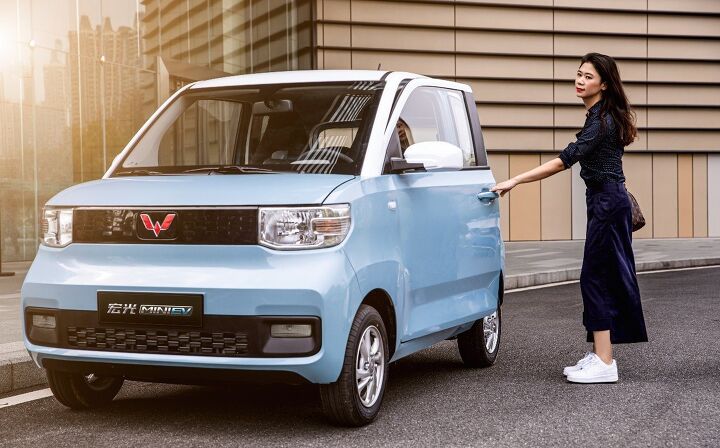



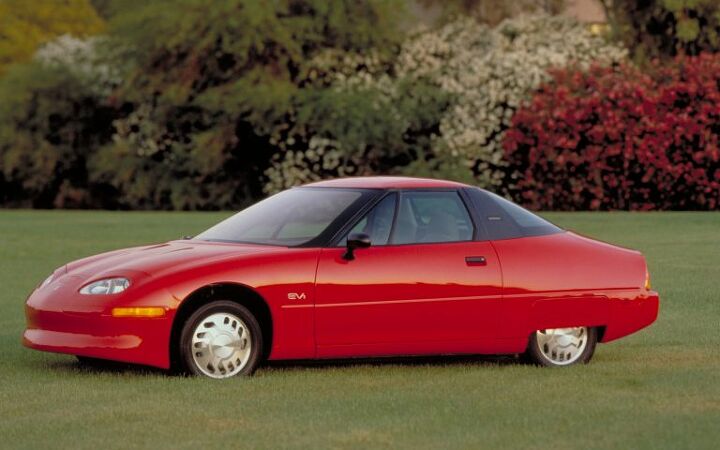



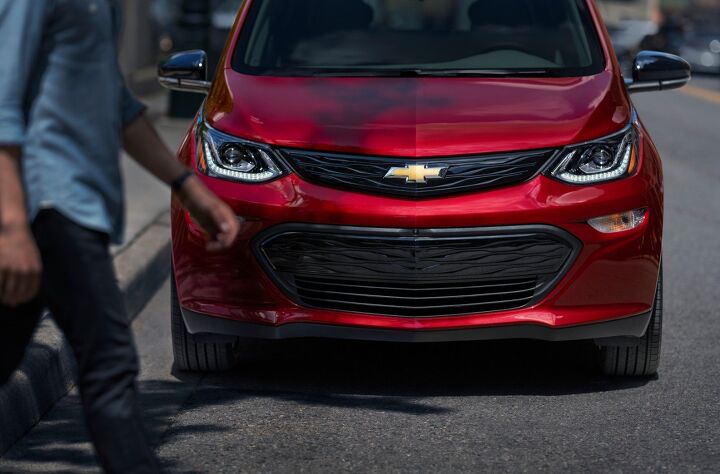
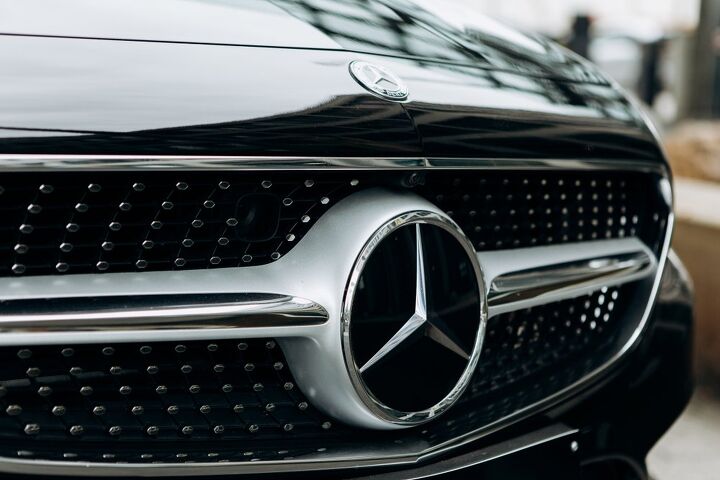


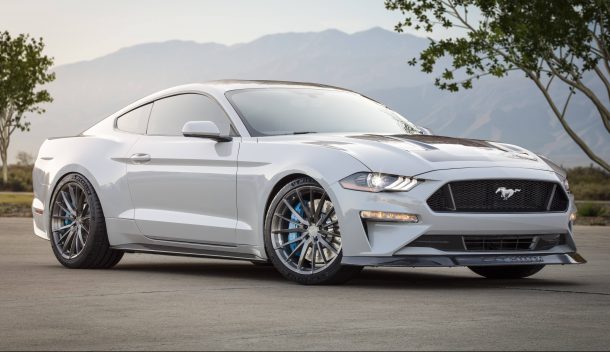


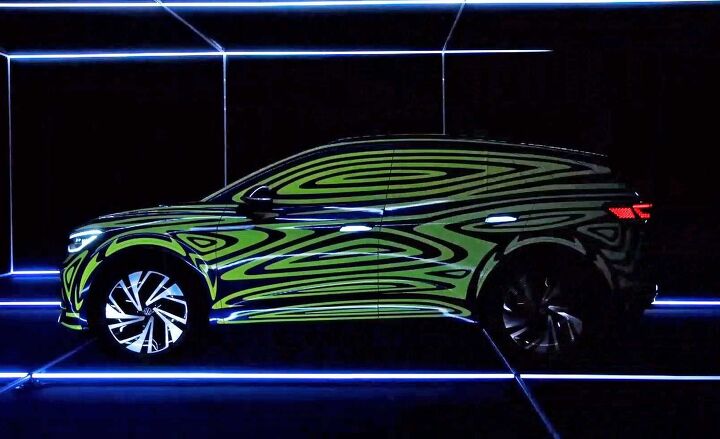






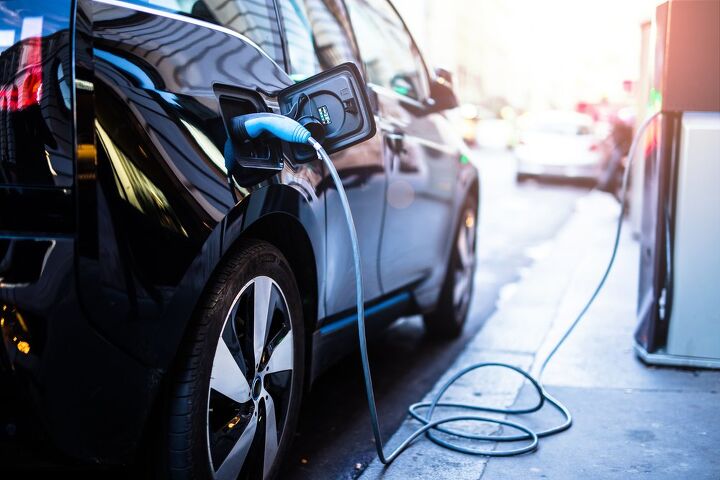



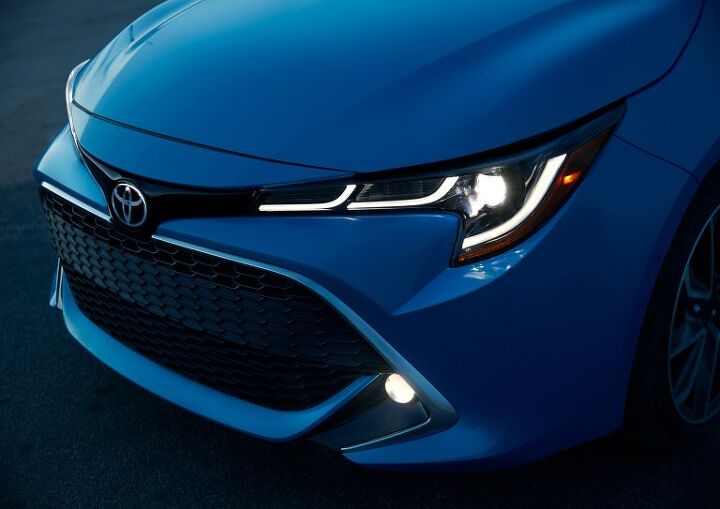
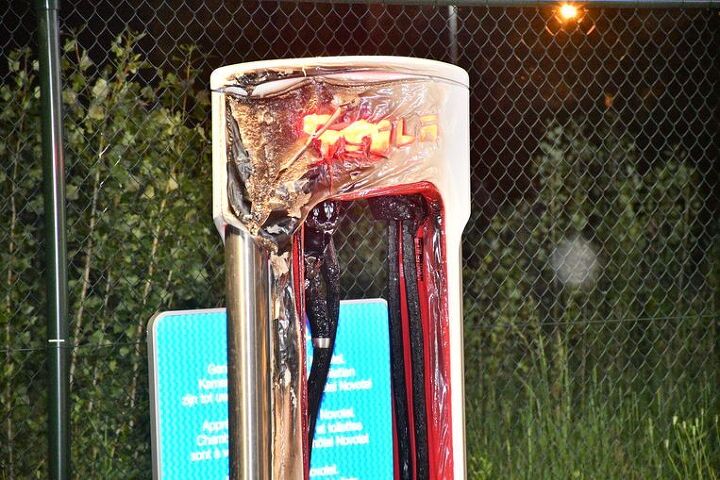
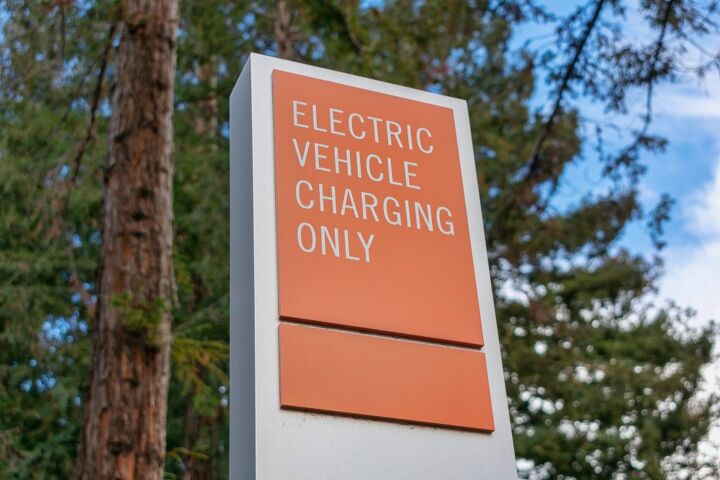


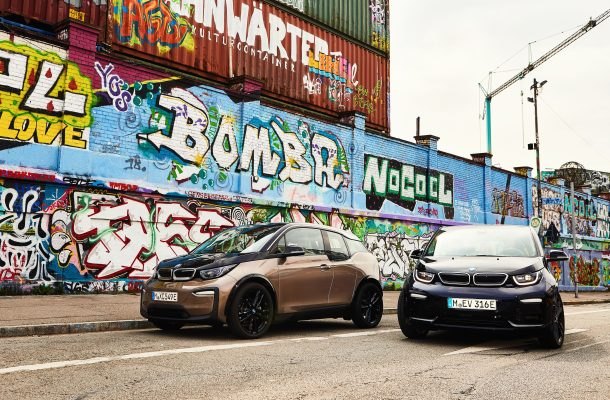



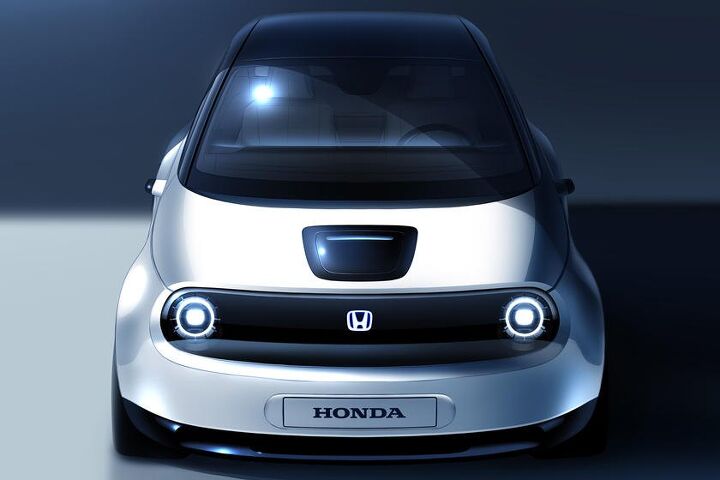



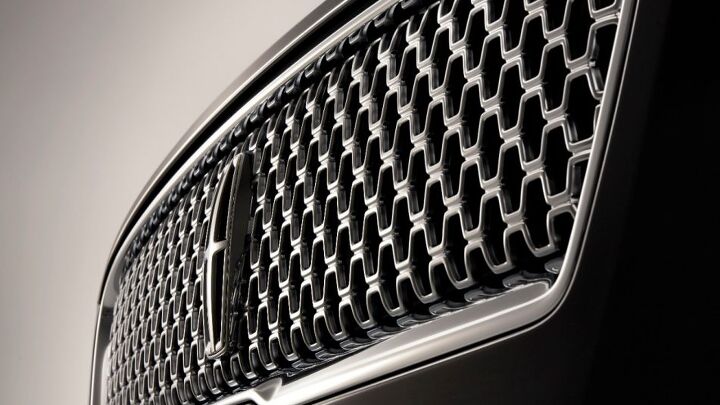

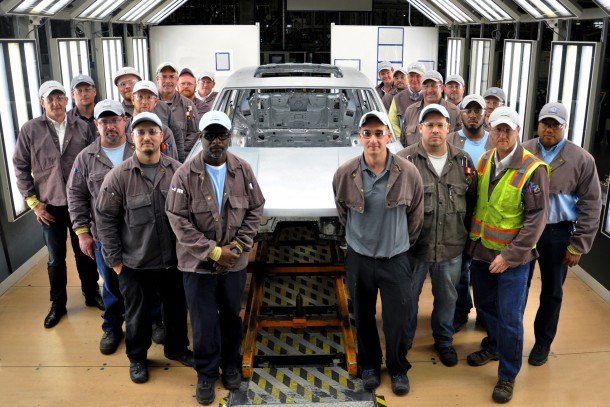

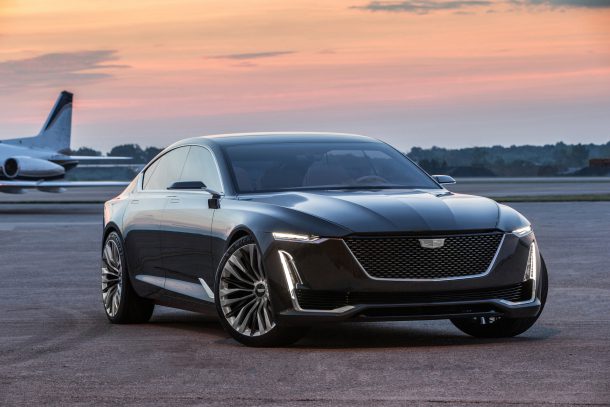
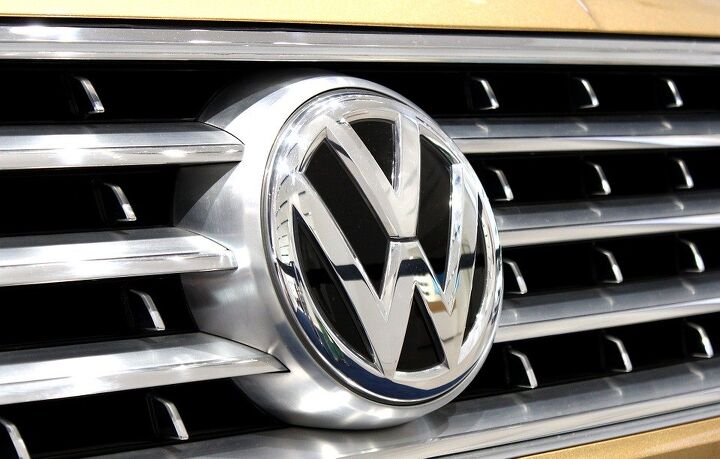



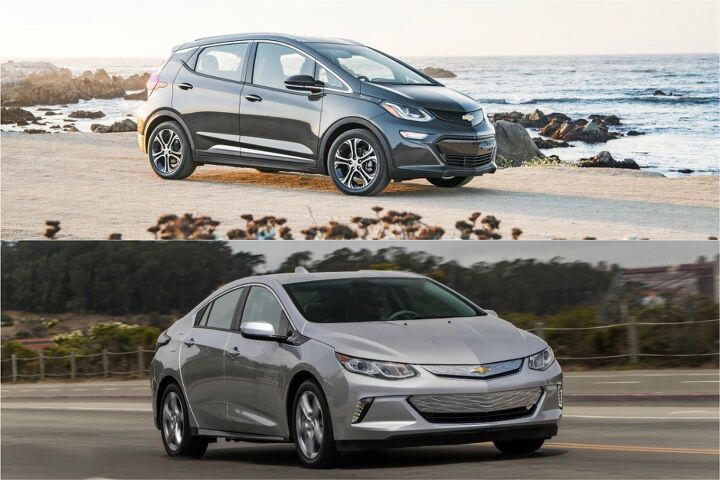

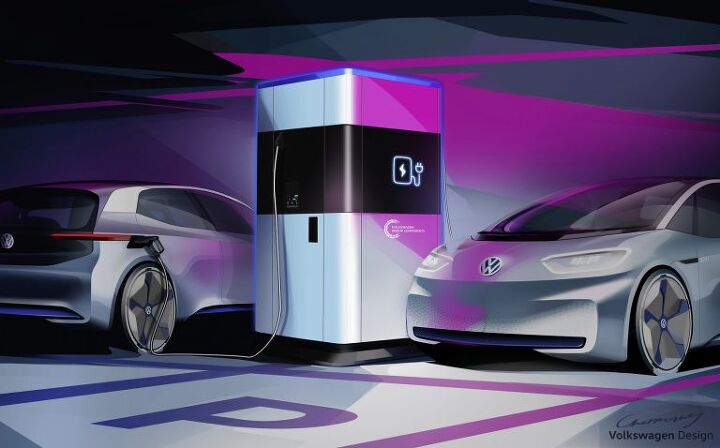




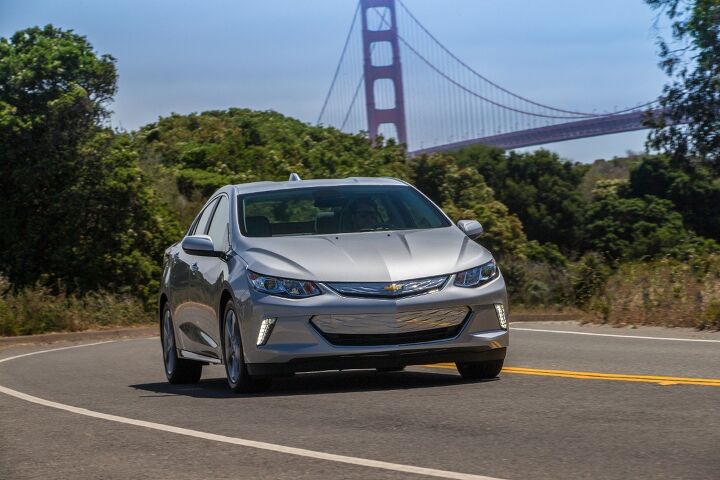
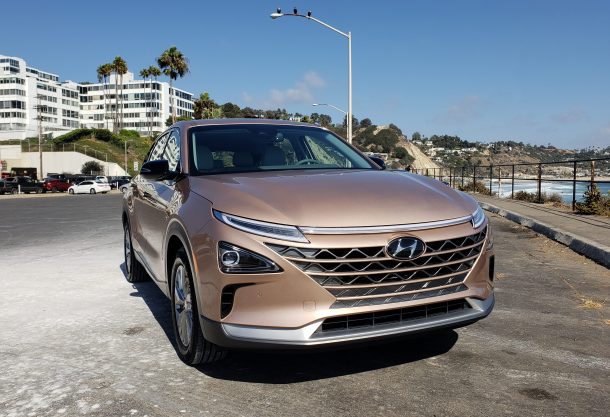













Recent Comments